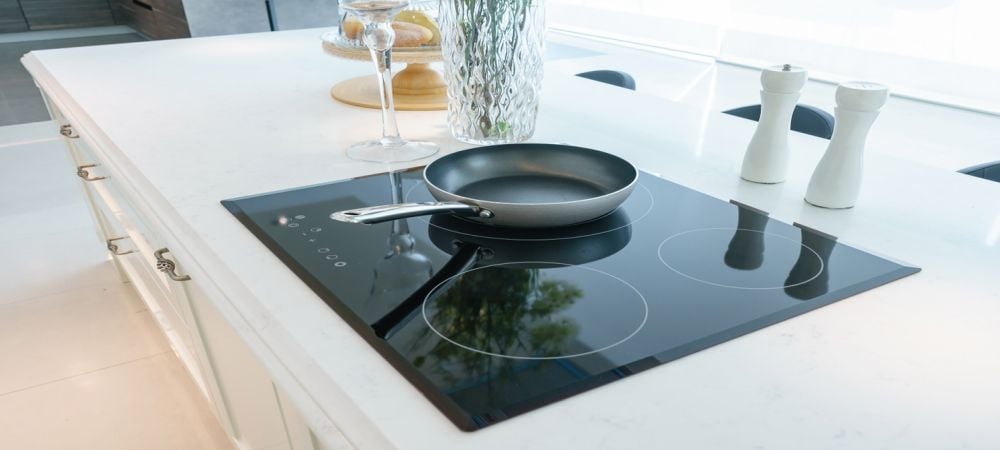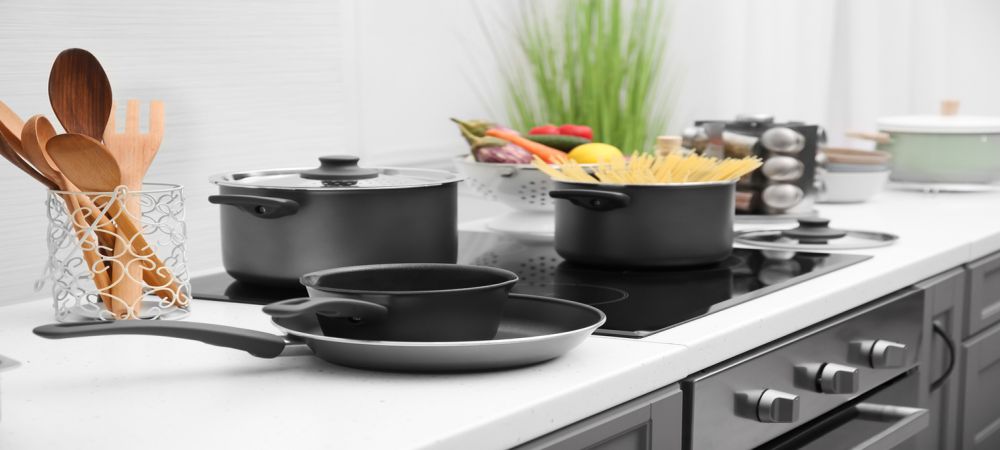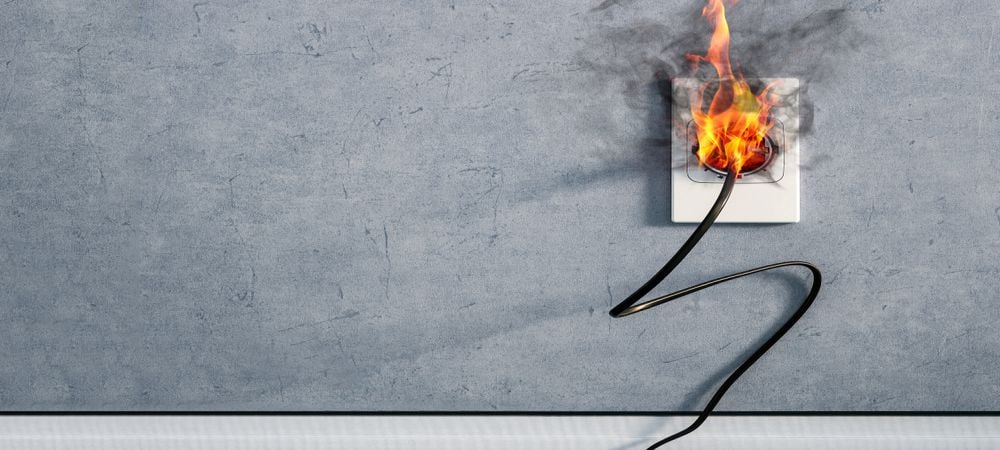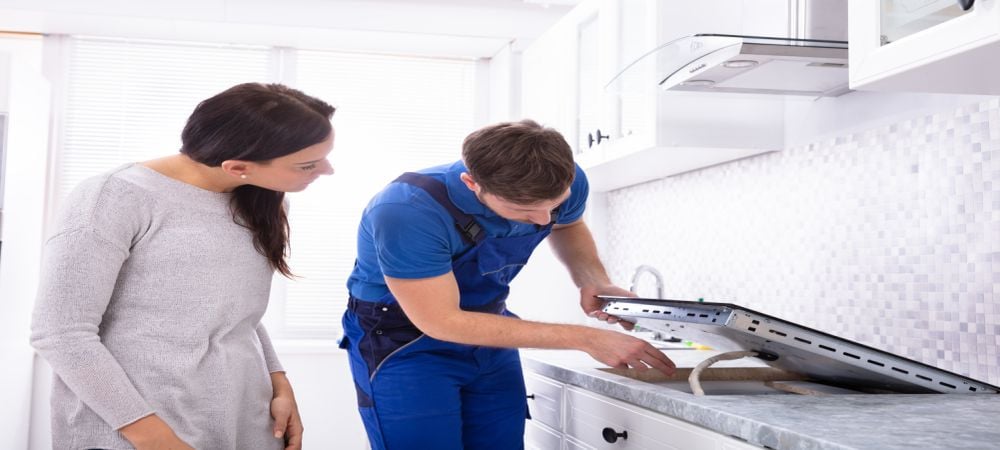An electric stove (or electric range) has a few advantages over a gas stove. For one, it dissipates heat evenly – and efficiently. And so, after much food preparation, discovering the cooktop not heating up is incredibly frustrating. You have some choices here. 1. Hire appliance repair technician and, while at it, order food. 2. Read on to troubleshoot, find the cause, and hopefully fix the problem yourself.
How Do Electric Stove Burners Produce Heat?
In principle, burners are similar to heaters in that they rely on electrical resistance to produce heat. Your electric cooktop, however, needs to generate much more heat to cook food, thus requiring more power.
Electrical power, measured as watts, is equivalent to voltage multiplied by current. At 120 volts, the standard supply voltage in Canada, the appliance cannot raise the temperature high enough to generate heat at levels suitable for cooking. That is why the electric range or stovetop you bought is dual voltage.
One way to check if your appliance is, indeed, dual voltage is to check the specifications. Its voltage parameter should be:
- INPUT: AC 120/240 V 50-60 Hz
Quite simply, you can use such an appliance for voltages between 120 V and 240 V.
Because of the huge power needed, electric burners are connected to a 240-volt circuit.
Notice the power cord has three thick wires? Electricity passes through these wires from the power source to a terminal block. From here, electricity is distributed to various components, including the heating elements or heating coils and the thermostat.
The burner on an electric range can be conventional in which it uses the traditional coil. Most modern electric cooktops, though, are radiant burners in which the coils are placed beneath a ceramic surface for better distribution of heat.
Electric stoves use electrical resistance to generate heat through the insulated coils, which make up the heating elements. Each heating element has a switch to turn it on and off, and a thermostat to control the temperature.
Why Is Your Electric Cooktop Not Heating Up?
There are a few reasons why an electric stove turns on but takes forever or won’t heat up. Before attempting to troubleshoot and fix the problem, the first thing you need to do is to cut off power by unplugging the appliance. For certain, you do not want to add electric shock to the list of problems. Also, if you used the stovetop recently, let it cool down first. At any rate, the cause is likely to be the power receptacle, the switch, or the burner.
1. Check the Power Source Receptacle
Grease, oil, and moisture can accumulate in the power receptacle can cause a problem. Over time, it may lead to arcing. Even if the electrical short is intermittent and appears harmless, the heating element eventually gets damaged. You can prevent this from happening by regularly cleaning the element tips inside the receptacle.
If you need to replace the heating element, you should also replace the power source receptacle. You may not notice it but the receptacle may already have incurred damage. It might even be the reason why the heating element shorted in the first place.
2. Loose or Burnt Wire
As you check the power receptacle and other components, remember to inspect all electrical wires. In particular, look for loose connections and signs of damage – such as burn marks.
Loose wires, as long as you are sure there is no damage, can be fixed securely. If you did find a burnt wire, see where it is connected to make sure the components – element and switch, for example – are all unaffected.
Related article: Dishwasher Leaking: Top 7 Causes and How to Fix
3. Burned Out Heating Element
A selector switch controls the flow of electricity to its designated heating element. After turning the knob to a particular heat setting, the element heats up as the circuit closes. If the electric stove is not producing enough heat, then the problem might be a burnt-out element.
Before deciding to change the heating element, one thing you can do is to clean it first so that you can inspect it better. Incidentally, cleaning regularly is highly recommended.
For conventional stove burners, it should be easy to spot signs of blistering, breaks, or bubbling. As for radiant burners, you would need to look beneath the ceramic top to inspect the coils for burn spots and other signs of damage.
A plug-in element is easier to troubleshoot because you only need to raise it slightly then pull it out. If this is your burner, then check the prongs for signs of damage, and clean as necessary. After, reinsert the element and test to see if it is heating properly.
Heating elements wired directly are a little bit more challenging. Consult the owner’s manual to see if it has instructions on raising the cooktop. Some require you to push the upper part back first before lifting it to open. Others may entail lifting the front corners first. Hopefully, yours is one that has a hinge at the back, making it easy to open.
You don’t have to see obvious or visible breaks. If anything appears out of ordinary, it may be best to replace the heating coil with a new one. On the other hand, the absence of troublesome signs is not an indicator that there is no problem. The only way of knowing for sure is to use a multimeter to test for continuity. At any rate, if you are unsure, try to troubleshoot other possible causes of the elements not heating up.
Once you are positive that the heating element needs replacement, the process for conventional burners is simple. Not for cooktops with ceramic tops, though, as it involves a little more work.
First, remove the clips where the electrical wires from the element enter the porcelain insulator. Next, unscrew the terminal screws to detach the wires. Be sure to label the wires so that you would know which one is which. Finally, put in the new element and attach the wires to reassemble.
4. Faulty Selector Switch
As mentioned, each heating element has a dedicated switch – not only to turn on or off but to also regulate the voltage hence the heat. Once it reaches the desired temperature, it shuts off the electricity. It is a continuous cycle that lasts through the entire cooking process.
Although tedious, you can test the switch by swapping the element with another one. It can be a new one, or you could temporarily borrow a working one, provided they are the same size. If, indeed, the switch is defective, then changing it should fix the problem of your electric stove not properly heating up.
5. Replace the Plug-in Burner
GE and Kenmore are among the brands that usually use plug-in burners in their electric cooktops. If you need to replace it, do so carefully.
Typically, you would only grab the outer coil, lift, and pull to detach the plug-in burner. Installing a new one is easy. You only need to slide the prongs into the terminal receptacle and push forward to lock and secure it in place.
Note on Cleaning the Top Burner Coils
Cleaning top burners regularly goes a long way in preventing problems such as failing to heat up. However, there are things that you should know to make sure that not only is it clean, but also would not get damaged accidentally.
Radiant burners are easy to clean. However, for traditional burner coils, you want to be careful. Such cooktops would have insulating sheaths protecting electrical wires attached to the element. Beneath is a metal drip bowl that catches oil and food debris.
Most burner coils are easy to detach. If you can do that, then that makes the cleaning process so much easier. The one thing you should not allow to happen is to get the element and the plug end wet.
You can wipe the coil itself, metal support, and drip pan with a damp cloth. If needed, you can also mix a bit of soap into the water. Call Prime Appliance Repairs today!
Related article: How to Repair an Oven Not Heating Up









